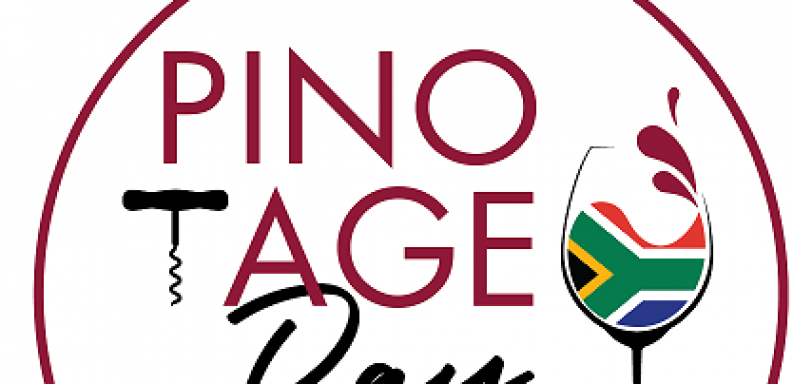Exploring Pinotage
By Jamie Goode | 8th October 2020
I think it would be fair to say that Pinotage is not everyone’s cup of tea. Or, to use another metaphor, it’s definitely a marmite wine. Some people love it, while some hate it. There are winemakers and journalists who are Pinotage bashers, and this enrages the Pinotage lovers. But the main point is this: Pinotage is a uniquely South African grape, and it’s a commercial success story. And it’s full of interest.
First, though, what exactly is Pinotage? There are lots of different styles of Pinotage wines, and so it’s really hard to say ‘I like Pinotage’ without qualifying that statement: which sort of Pinotage?

Before we address that question, let’s go back to the beginning. Back in the 1920s, Izak Perold, a professor at the University of Cape town, was commissioned to travel overseas and scout for grape varieties that might do well in the Western Cape. He returned with 177 different varieties, and also began work crossing different varieties to produce new ones. Grape vines are normally propagated vegetatively as cuttings, but if they are grown from seed, they produce new varieties. With care, you can cross two different varieties to try to produce a new one with the beneficial properties of both. You have to take care, because grape vines are self-fertile and can have sex with themselves, so to do this you need to remove the male bits of the mother variety. You have to grow a lot of vines from seed after this cross (each will be different) to find a good one, as normally vines grown from seed aren’t as interesting as their parents.
One of Perold’s crosses involved Cinsault (known misleadingly as Hermitage, which was a common name for Shiraz/Syrah at the time) and Pinot Noir, hence the name Pinotage. Perold planted this new variety in his residence garden at the University in 1925. Two years later he left to work with the KWV, leaving the vines growing in his now untended garden. It was almost lost to the world, and was only rescued by a young lecturer Dr Charlie Niehaus when Perold's garden was cleared up. These vines (there were four plants) were replanted in the nursery at Elsenburg Agricultural College by Prof CJ Theron, who later showed the vines to Perold. There was no overnight success story, though. While the new variety was grown in vineyards and slowly gained traction, it wasn’t until the 1950s that the first varietal Pinotage wines were made.
Things took off when Bellevue, a winery in the Bottelary Hills region of Stellenbosch, made a Pinotage that was crowned champion wine at the Cape Young Wine Show in 1959, and in 1961 Kanonkop repeated the win with their Pinotage.
So why is it that Pinotage has haters, in a way that other grape varieties don’t? It’s probably because this variety, while well adapted to the warm climate of the Cape, does pose some viticultural challenges. If it isn’t handled well, or is overcropped, it can show a wide range of ripeness levels in the same bunch. Thus some berries will be very ripe, while others underripe, resulting in some jammy over-ripe flavours alongside some ‘green’ tastes. Badly made Pinotage does taste a bit weird: it’s hard to describe, but there’s something unusual about the flavour. Is bad Merlot bad? Yes, of course, but bad Pinotage seems to have something particularly bad about it.
So here we return to the style issue. If we were to classify Pinotage into different style camps, I think this is how I’d do it.
First, we have the blockbuster style. This won’t be for everyone, but some people really like it. The idea is to start with ripe grapes and use a winemaking technique that extracts as much flavour from them as possible. Then age the wine in oak barrels, with a good proportion of new oak, and perhaps some American oak as well as French (the former gives more of the toasty vanilla character). The result is a dark, sweetly fruited wine with good structure and some appealing oak character.
Then we have the polar opposite: the elegant style. Here the goal is to produce something lighter, more ethereal, and aromatic. The grapes are picked a little earlier, then fermentation is more of an infusion than an extraction, resulting in a wine that is more red fruits than black, with fine tannins and a lighter colour. Think Burgundy versus Bordeaux. This style is winning many converts at the moment: after all, the speciality of both parent varieties – Pinot Noir and Cinsault – is for making lighter-style red wines.
The third style would be the juicy, fruity, more commercial style, and this is the one that has got a lot better in recent years. It’s great that there are now lots of affordable Pinotage wines on the market that taste good, with joyous bright berry fruits. Not complicated, but just fun to drink.
And then we have the fourth style, which is perhaps the most controversial: coffee Pinotage. When winemaker Bertus Fourie was working at Diemersfontein he figured out a protocol that have Pinotage a coffee flavour. It involves using high-toast oak staves in the fermentation (normally red wines don’t see barrels until after fermentation has finished). When Fourie left, …. Weren’t happy that he was taking this commercially successful recipe with him and they got legal. Fourie also picked up the nickname ‘Starbucks’ for his troubles. I remember the first time I tasted coffee Pinotage. It was unusual, but quite likeable, and the coffee flavour really works well.
If you have been scared off Pinotage in the past, maybe it’s time to give it another go? Whether you like it or not, though, this variety is a wonderful part of South Africa’s wine offering, and its future is bright.
